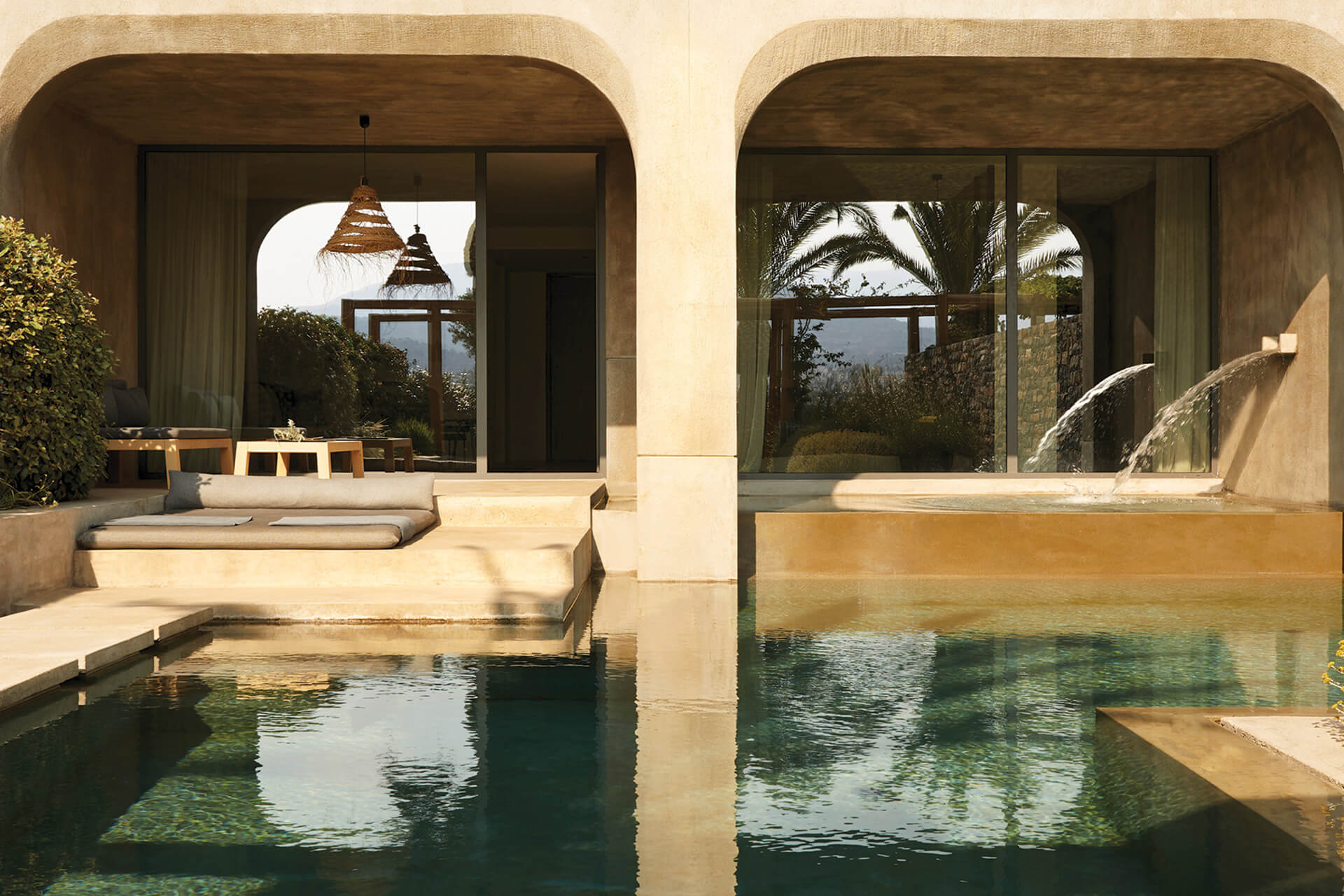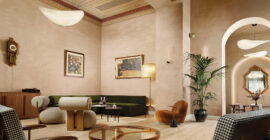Symbolic routes
The redesign of the interior of Minos Palace Resort aimed to create an experience that activates emotion and the senses, marking the transformation of a traditional hospitality space into a curated world of emotional, physical, and spiritual renewal.
Project Aim
Designed as a “place of well-being,” the project reflects the international shift toward a lifestyle model grounded in scientific principles and serving as the foundation of a comprehensive hospitality experience. The brief called for the redesign of the common areas and wellness spaces as immersive, safe environments for personal transformation.
The masterplan was implemented in two phases: first with the renovation of the lobby, restaurant, bar, and pool lounge, and later with the development of Nao, the emotional core of the resort. The design translated the journey of self-awareness into an architectural experience through open-air panoramas, serene interiors, and earthy tones that evoke calm.
Introducing an element of surprise into a historically strict, rectilinear building posed a significant challenge. Built in the 1980s, the resort presented substantial constraints: immovable structural columns and an outdated circulation logic. Breaking free from this rigid framework was both a technical challenge and an innovative ambition.

Design Philosophy
To achieve this, a design approach of flow and continuity was adopted, visually embodied by the spiral—the symbol of the resort. The spiral inspired organic lines, fluid pathways, and sculptural forms that dissolve static geometry and reflect the infinite movement of life and nature. Architecture thus becomes an evolving experience: a 360° environment that flows inward toward introspection and outward toward the sea.
A similarly decisive intervention was the redesign of the entrance. The original staircase was replaced with an extended ramp, while the reception level was lowered and brought into alignment with the exterior floor, allowing visitors to immediately connect with the horizon, architecture, and sea upon entry. The result is a moment of revelation where the boundaries between built and natural environments dissolve. Moreover, the Nao facilities are accessible to both the local community and the staff, promoting a culture of care and solidarity.
Service flow in the restaurant and bar was subtly optimized for greater efficiency and connectivity. Service points were strategically positioned to improve circulation, while the open kitchen enhances transparency and direct interaction with guests, creating a more experiential gastronomic encounter.

Vegetation & Materials
To balance minimalism with warmth, soft lighting, natural textures, and curved lines were incorporated, ensuring a design that is both sustainable and welcoming. Materials such as polished concrete, soft plaster, large glass surfaces, and custom metal structures were selected for reasons of sustainability and tactile experience. In the outdoor areas, the integration of water and fire required precise mechanical design to ensure both safety and elegance. Dense bamboo planting created natural sound barriers and visual privacy. Lighting followed the same intent: suspended lanterns and illuminated pathways enhance the sense of calm and immersion.






